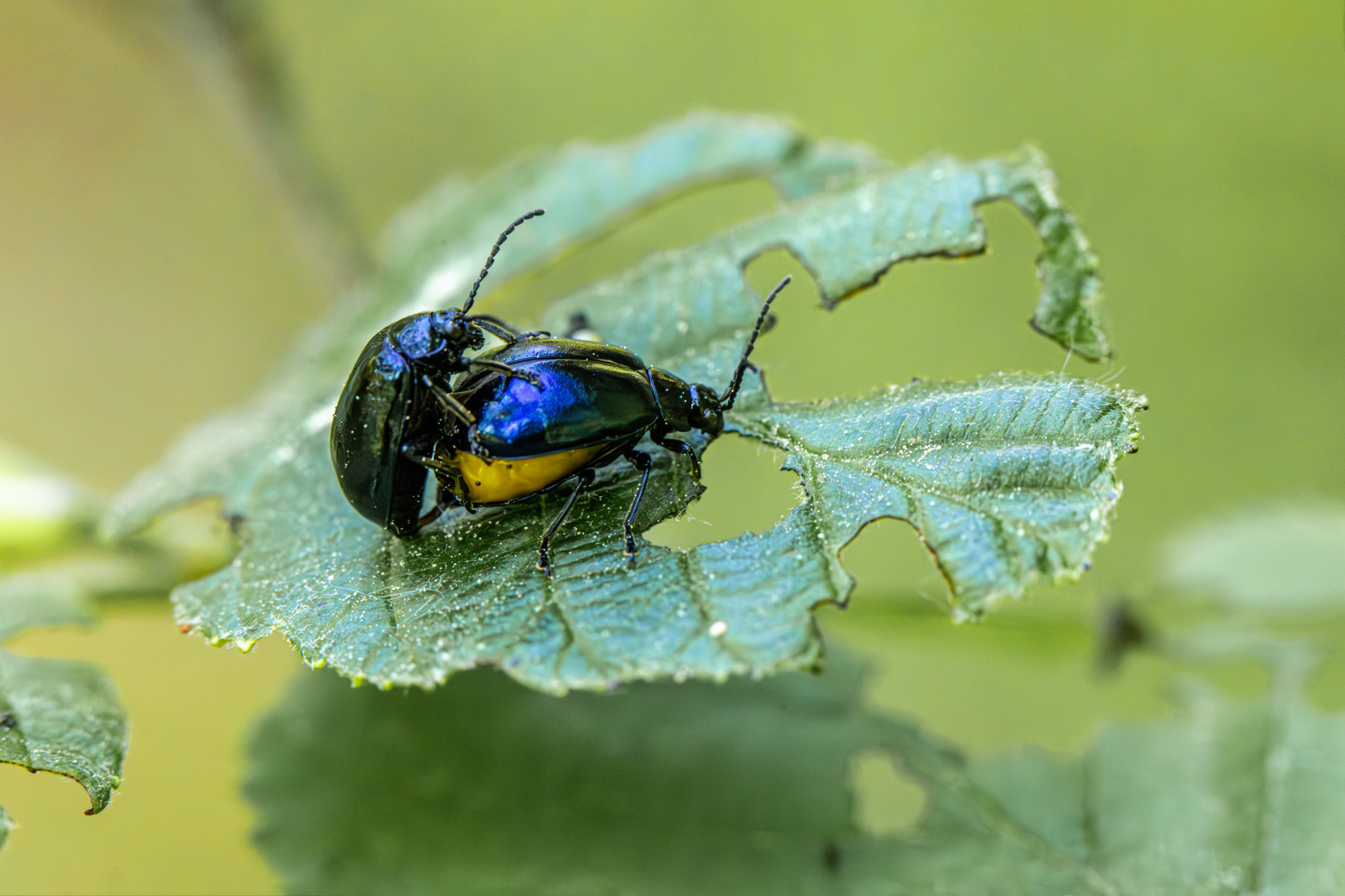The Alder Leaf Beetle (Agelastica alni) is a species of beetle in the family Chrysomelidae, known for its association with alder trees. Here are some key features and characteristics of the Alder Leaf Beetle:
Appearance
- Size: Adult Alder Leaf Beetles are relatively small, measuring about 6 to 7 millimeters in length.
- Color: They have a distinctive metallic blue or blue-green coloration, which makes them relatively easy to identify.
- Morphology: The beetles have an oval-shaped, somewhat convex body typical of leaf beetles. Their antennae are relatively short compared to their body length.
Habitat
- Preferred Habitats: As their name suggests, Alder Leaf Beetles are primarily associated with alder trees (genus Alnus). They can also occasionally be found on other trees and shrubs, such as birch and hazel.
- Geographic Range: Agelastica alni is native to Europe and parts of Asia. It has also been introduced to North America, where it can be found in some regions.
Behavior
- Feeding: Both the adult beetles and their larvae feed on the leaves of alder trees. Adults create characteristic feeding holes in the leaves, while larvae skeletonize the leaves, eating the tissue between the veins.
- Life Cycle: The life cycle of the Alder Leaf Beetle includes egg, larval, pupal, and adult stages:
- Eggs: Laid in clusters on the underside of alder leaves.
- Larvae: Hatch from the eggs and begin feeding on the leaves, causing significant damage by skeletonizing them.
- Pupae: Larvae eventually drop to the ground to pupate in the soil.
- Adults: Emerge from the soil to continue feeding and breeding. There is usually one generation per year, though in warmer climates, there may be multiple generations.
Ecological and Economic Impact
- Defoliation: Heavy infestations of Alder Leaf Beetles can lead to significant defoliation of alder trees, which can stress the trees and reduce their growth. However, healthy trees can usually withstand moderate levels of feeding.
- Control Measures: Management of Alder Leaf Beetle populations can include monitoring for early signs of infestation, using biological controls such as natural predators, and applying insecticides when necessary. Maintaining tree health is also important for reducing the impact of beetle feeding.
Interesting Facts
- Metallic Coloration: The striking metallic coloration of Agelastica alni is due to the microscopic structure of their cuticle, which reflects light in a way that creates their blue-green appearance.
- Seasonal Activity: Adult beetles are typically most active from late spring to early autumn. They can be seen feeding on alder leaves during this time.
Identifying Agelastica alni
- Distinctive Features: The metallic blue or blue-green color and the specific feeding damage on alder leaves are key identifiers for this species. The oval body shape and relatively small size also help distinguish them from other beetles.
In summary, the Alder Leaf Beetle (Agelastica alni) is a small, metallic blue beetle that feeds on alder trees. Both adults and larvae cause noticeable feeding damage, but healthy trees can usually recover from moderate infestations. This beetle is native to Europe and parts of Asia and has also been introduced to North America. Effective management involves monitoring and, if necessary, using biological or chemical controls to protect alder trees from significant defoliation.
Views: 9
Subscribe to the newsletter:
